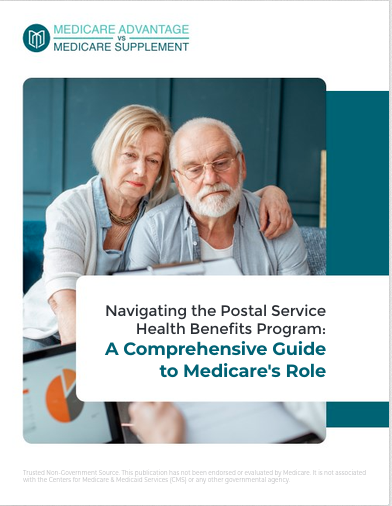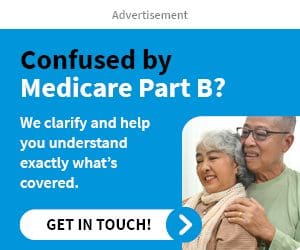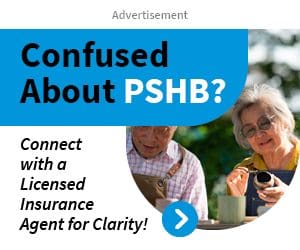Key Takeaways
- Understanding prescription drug cost reductions in Medicare can help you manage your healthcare expenses better.
- Navigating Medicare drug coverage options effectively can lead to significant savings on prescription medications.
What You Need to Know About Prescription Drug Cost Reductions in Medicare
As healthcare costs continue to rise, understanding the mechanisms for reducing prescription drug costs in Medicare becomes increasingly important. Navigating the complexities of Medicare’s prescription drug coverage can be challenging, but gaining knowledge about available cost-saving strategies can help you manage your expenses effectively.
Understanding Medicare Prescription Drug Coverage
Medicare prescription drug coverage, also known as Medicare Part D, is designed to help Medicare beneficiaries pay for their prescription medications. This coverage is offered through private insurance companies approved by Medicare. There are two main ways to get Medicare prescription drug coverage:
- Medicare Prescription Drug Plans (PDPs): These are standalone plans that add drug coverage to Original Medicare (Part A and Part B).
- Medicare Advantage Plans (Part C): These plans offer comprehensive health coverage, including prescription drugs, and are an alternative to Original Medicare.
How the Medicare Drug Benefit Works
Medicare Part D provides a range of coverage options that vary in cost and the list of covered drugs (formularies). Each plan has different premiums, deductibles, and copayment structures. Understanding these elements can help beneficiaries choose the plan that best fits their needs and budget.
- Premiums: The monthly fee you pay for coverage.
- Deductibles: The amount you pay out-of-pocket before your plan starts to pay.
- Copayments/Coinsurance: The cost-sharing amount you pay for each prescription after the deductible is met.
The Four Coverage Phases of Medicare Part D
Medicare Part D coverage is divided into four phases:
- Deductible Phase: Beneficiaries pay 100% of their prescription drug costs until they meet their plan’s deductible.
- Initial Coverage Phase: After meeting the deductible, beneficiaries pay a copayment or coinsurance for their medications until total drug costs reach a certain limit.
- Coverage Gap (Donut Hole): Beneficiaries pay a higher percentage of drug costs. Recent changes have reduced the impact of the coverage gap, but it’s still a phase where costs can be higher.
- Catastrophic Coverage: Once out-of-pocket expenses reach a specified amount, beneficiaries pay significantly lower copayments or coinsurance for the remainder of the year.
Recent Changes and Their Impact
Several legislative changes have aimed at reducing the burden of prescription drug costs for Medicare beneficiaries. One significant development is the gradual closing of the coverage gap. Beneficiaries now pay 25% of the cost of brand-name and generic drugs while in the gap, down from previous higher percentages.
Inflation Reduction Act and Medicare Drug Prices
The Inflation Reduction Act includes provisions to lower prescription drug prices for Medicare recipients. This legislation allows Medicare to negotiate prices for certain high-cost drugs, which is expected to reduce expenses for beneficiaries. Additionally, the act includes measures to cap out-of-pocket costs for insulin and other essential medications.
From January 1, 2024, some Medicare Part D beneficiaries with high drug costs will have their annual out-of-pocket costs capped at approximately $3,500. Starting in 2025, this cap will be reduced further to $2,000. The act also requires drug companies to pay rebates to Medicare if their price increases for certain drugs exceed the rate of inflation.
Strategies to Reduce Prescription Drug Costs
Medicare beneficiaries have several strategies at their disposal to reduce prescription drug costs:
- Choosing the Right Plan: Comparing different Medicare Part D and Medicare Advantage plans can help find one that offers the best coverage at the lowest cost.
- Using Generic Drugs: Opting for generic medications instead of brand-name drugs can significantly lower out-of-pocket expenses.
- Mail-Order Pharmacies: Many plans offer lower costs for medications obtained through mail-order services.
- Assistance Programs: Various state and federal programs provide financial assistance to help cover prescription drug costs for eligible individuals.
- Price Comparison Tools: Utilizing online tools to compare drug prices at different pharmacies can uncover potential savings.
The Role of Generic Drugs in Cost Reduction
Generic drugs are chemically identical to their brand-name counterparts and are typically much cheaper. The FDA ensures that generics meet the same standards for safety, efficacy, and quality as brand-name drugs. Encouraging the use of generics is a key strategy for reducing prescription drug costs under Medicare.
Biosimilars: A New Frontier
Biosimilars are biologic medical products highly similar to already approved biological medicines. They provide another cost-saving opportunity for beneficiaries by offering lower-cost alternatives to expensive biologic drugs. As more biosimilars enter the market, they are expected to play a significant role in reducing Medicare drug spending.
Assistance Programs for Prescription Drug Costs
Various programs assist Medicare beneficiaries in managing their prescription drug costs:
- Extra Help (Low-Income Subsidy): This federal program helps individuals with limited income and resources pay for Medicare Part D premiums, deductibles, and copayments.
- State Pharmaceutical Assistance Programs (SPAPs): Some states offer programs to help residents pay for prescription drugs.
- Patient Assistance Programs (PAPs): Many pharmaceutical companies provide free or discounted medications to individuals who meet certain criteria.
Navigating Extra Help
The Extra Help program can save eligible beneficiaries thousands of dollars annually on prescription drug costs. Those who qualify receive assistance with premiums, deductibles, and copayments, and are not subject to the coverage gap.
Importance of Annual Plan Review
Medicare Part D and Medicare Advantage plans can change their formularies, premiums, and other cost-sharing aspects annually. It’s crucial for beneficiaries to review their plans each year during the Medicare Open Enrollment Period (October 15 to December 7) to ensure they have the most cost-effective coverage.
How to Compare Plans
When comparing plans, beneficiaries should consider:
- Total Annual Costs: Evaluate not just premiums, but also deductibles, copayments, and coinsurance.
- Formulary Coverage: Ensure the plan covers all necessary medications.
- Pharmacy Network: Check if preferred pharmacies are included in the plan’s network.
- Star Ratings: Medicare’s star ratings can help assess the quality and performance of different plans.
Future Trends in Medicare Drug Costs
Several trends could impact Medicare prescription drug costs in the future:
- Expansion of Drug Price Negotiations: Expanding the scope of drugs eligible for Medicare price negotiations could lead to further cost reductions.
- Innovative Payment Models: Value-based pricing and other innovative payment models are being explored to better align drug prices with their clinical benefits.
- Telehealth and Digital Health: The growth of telehealth and digital health solutions can improve access to care and potentially lower costs.
Lower Prescription Drug Costs in 2024 and 2025
In 2024, the new prescription drug law places a cap on annual out-of-pocket costs for Medicare Part D beneficiaries if they reach the catastrophic coverage phase, which begins at a threshold of $8,000 in true out-of-pocket (TrOOP) costs. As of January 1, 2024, individuals enrolled in Medicare Part D who have very high drug costs will no longer have to pay cost sharing in the catastrophic phase. Additionally, the eligibility for full benefits under the Low-Income Subsidy (LIS or “Extra Help”) program has expanded, benefitting nearly 300,000 people with low and modest incomes. This program helps with premiums, deductibles, and copayments, ensuring that beneficiaries do not need to pay a deductible or premiums for their prescription drug coverage.
Starting in 2025, all Medicare Part D beneficiaries will benefit from a $2,000 cap on annual out-of-pocket prescription drug costs. This cap will provide significant financial relief for those with high prescription drug costs, allowing them to budget more effectively and avoid large, unexpected expenses. Furthermore, the Medicare Prescription Payment Plan will allow beneficiaries to spread their out-of-pocket costs over the calendar year rather than paying the total amount upfront at the pharmacy counter.
Reducing Your Medicare Prescription Drug Costs
Reducing prescription drug costs within Medicare requires an understanding of the various coverage options, recent legislative changes, and available cost-saving strategies. By carefully selecting the right plan, using generic and biosimilar drugs, and taking advantage of assistance programs, beneficiaries can manage their medication expenses more effectively. Regularly reviewing and comparing plans during the Medicare Open Enrollment Period is essential to ensure continued cost savings and optimal coverage.
Contact Information:
Email: [email protected]
Phone: 4805551234









